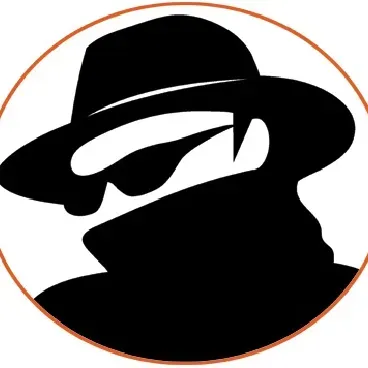The Power of Three, The Blue Wave, Soft Targets, Flaws: They're Always a Surprise, Look: No Hands, and Even the Best. It's CISO Intelligence for Monday, 11th August 2025.
The magic number, all hands on deck, scourges always prey on the weak, open sesame, no interaction required, and when everything's big - including the mistakes.

Table of Contents
- The Three Lines Model: A Cybercomedy in Three Acts
- When Locker Makes Blue, Time to Get a Clue
- Grandparents vs. Scammers: It's Not a Fair Fight
- When Your Vault's Ajar: Remote Control For Hackers
- Researchers Uncover GPT-5 Jailbreak and Zero-Click AI Agent Attacks
- The Great Google Gaffe: When Your Ads Become a ‘Leak’ Show
The Three Lines Model: A Cybercomedy in Three Acts
The Three Lines Model: Because Two Isn’t Enough for the Security Curtain Call
What You Need to Know
The Three Lines Model, a widely-known governance tool, is instrumental in clarifying role responsibilities and providing a coordinated approach to risk management in complex environments. The board and executive management should ensure this model is well-implemented to bolster cyber defenses. Key tasks involve endorsing strategic alignment, fostering collaboration between lines, and ensuring resources are sufficiently allocated.
CISO Focus: Risk Management Governance
Sentiment: Positive
Time to Impact: Short (3-18 months)
The Three Lines Model offers an insightful framework for better risk management, accountability, and governance within an organization. Originally rooted in the concept of internal audit, its application today spans governance, risk, and compliance. This model divides organizational roles into three distinct pillars: the first line (operations), the second line (risk management and compliance), and the third line (audit).
Layers of Defense
First Line: Operational Management
Operations management forms the frontline in the Three Lines Model. It's responsible for directly managing risks and implementing internal controls, encasing daily operational activities that must adhere to established guidelines and processes. This line is vital, as it represents the first barrier against potential threats, whether they stem from cyber threats, technological failures, or process inefficiencies.
Second Line: Risk Management and Compliance
The second line bolsters oversight functions. It provides expertise in risk management, compliance, and control activities, ensuring the first line's efforts align with organizational strategy and expectations. This line often includes specialized functions such as risk management committees, cybersecurity teams, and compliance officers who play advisory and monitoring roles.
Third Line: Internal Audit
Internal audit forms the third and final line of defense. This line provides independent assurance to the board and executive management by assessing the effectiveness of governance, risk management, and internal controls, thereby facilitating feedback loops that can lead to necessary adjustments in both first and second lines.
Modern Implications
Increasingly, the Three Lines Model is being adapted to meet modern organizational demands, especially regarding cybersecurity. The blurring lines of digital and physical enterprises imply this model is not a rigid structure but a dynamic, adaptable framework that evolves with organizational priorities.
Importance for Cybersecurity
Incorporating the Three Lines Model into cybersecurity practices is critical for maintaining a robust posture against evolving threats. By structuring clear, defined roles and coordination mechanisms, organizations are better equipped to anticipate, withstand, and respond to cyber incidents.
CISO Priorities and Integration
The CISO's mission aligns with the fluid execution of the Three Lines Model. Ensuring an organization's security strategies integrate seamlessly with its operational, compliance, and audit functions is paramount. A CISO should champion and facilitate this integration through strategic planning, routine evaluations, and encouraging a culture of transparency and communication.
Conclusion - Ready, Set, Go Cyber!
The Three Lines Model is more than just an administrative checkmark. It serves as a lighthouse guiding organizations through the turbulent seas of risk and governance. By adopting its principles with agility and foresight, organizations set themselves on a path to not only meet compliance but enhance resilience and readiness against cyber and operational threats.
Vendor Diligence Questions
- How does your organization integrate the Three Lines Model into its cybersecurity framework?
- What measures do you have in place to ensure the first line of defense is aware of and trained in cyber risk management?
- Can you provide examples of how risk management efforts are verified and validated by your third line of defense?
Action Plan
- Synchronize with Executives: Facilitate a meeting with senior leaders to reaffirm the organization's commitment to the Three Lines Model in risk mitigation.
- Gap Analysis: Conduct a comprehensive assessment to identify and rectify any gaps within current operations in alignment with the Three Lines Model.
- Training Initiatives: Develop a training program tailored for each line of defense, ensuring stakeholders understand their roles within the model.
- Schedule Regular Audits: Ensure that the third line of defense, internal audit, performs regular reviews of the first and second lines for compliance and efficiency.
- Feedback and Improvement: Implement feedback loops for constant refinement of processes within the Three Lines Model framework.
Source: What is the three lines model and what is its purpose?




